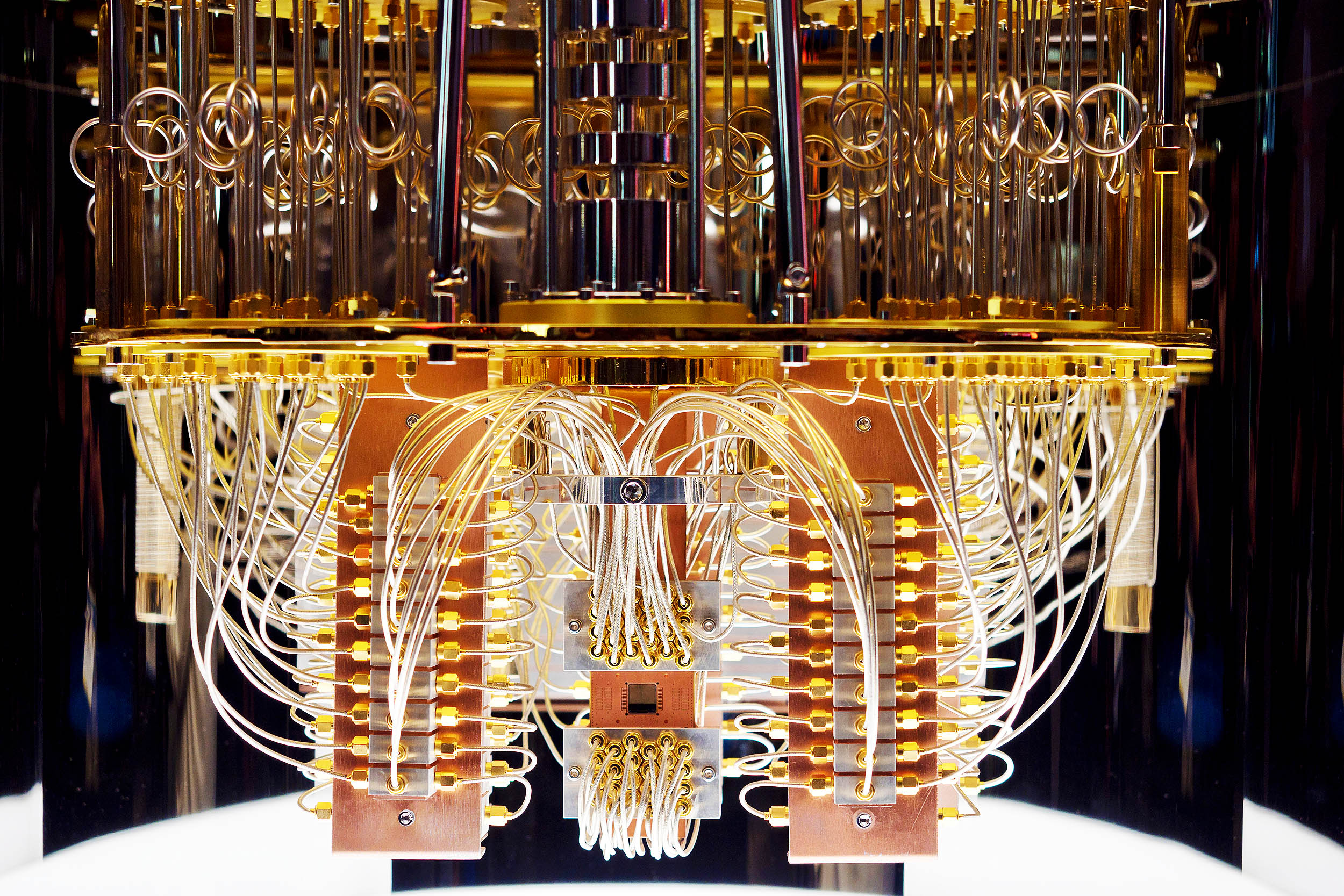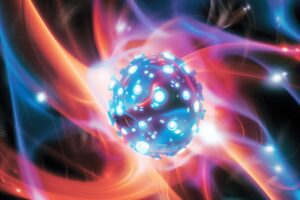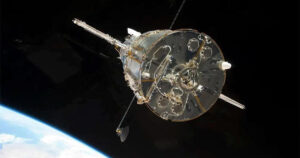Scientists have produced an improved, ultra-pure form of silicon that enables the construction of high-performance qubit devices. This fundamental component is crucial in paving the way to scalable quantum computing.
The statement published in the journal Communication materials – naturecould define and propel the future of quantum computing.
Ultra-pure silicon and the quantum revolution
The research was led by Professor Richard Currie of the Advanced Electronic Materials Group at the University of Manchester, in collaboration with the University of Melbourne in Australia.
“What we have been able to do is effectively create a critical ‘brick’ needed to build a silicon-based quantum computer,” Professor Currie excitedly announced.
“This is a crucial step towards making a technology that has the potential to be transformative for humanity – feasible; technology that could give us the ability to process data at such a scale that we will be able to find solutions to complex problems, such as addressing the impacts of climate change and addressing health care challenges,” Curry continued.
Challenges in Quantum Computing
One of the biggest challenges in developing quantum computers is that qubits, the building blocks of quantum computing, are highly sensitive and require a stable environment to support the information they store. Even small changes in their environment, including temperature fluctuations, can cause computer errors.
Another issue is their scale, both their physical size and processing power. Ten qubits have the same processing power as 1024 bits in a normal computer and can potentially take up much less space.
Scientists estimate that a fully operational quantum computer needs about one million qubits, providing a capability that is impossible for any classical computer.
Understanding qubits and their role in quantum computing
Qubits, or quantum bits, are the basic building blocks of quantum computers, analogous to the bits in classical computers. However, qubits have several unique properties that distinguish them from classical bits:
Superposition
While classical bits can only be in one of two states (0 or 1), qubits can exist in a superposition of multiple states simultaneously. This means that a qubit can represent a combination of 0 and 1 at the same time, allowing quantum computers to perform many calculations in parallel.
Entanglement
Qubits can be entangled with each other, meaning that their quantum states are linked even if they are physically separated. This property allows quantum computers to perform certain calculations much faster than classical computers.
Fragility
Qubits are highly sensitive to their environment and can easily lose their quantum state, a process called decoherence. This is one of the main challenges in building stable, large-scale quantum computers.
Quantum gates
Operations on qubits are performed using quantum gates, which are the quantum equivalent of logic gates in classical computers. These gates manipulate the quantum states of the qubits to perform calculations.
Measurement
When the qubit is measured, it collapses from its superposition state into a particular state of 0 or 1. The result of the measurement is probabilistic and depends on the initial quantum state of the qubit.
Error correction
Due to the fragility of qubits, quantum error correction techniques are needed to maintain the integrity of quantum computations. These techniques involve using multiple qubits to encode and protect the information stored in a single logical qubit.
Researchers are investigating various physical systems for implementing qubits, such as superconducting circuits, trapped ions, photons, and silicon-based spin qubits.
Each approach has its advantages and challenges, and the choice of qubit technology depends on factors such as scalability, error rates, and ease of manipulation.
Silicon is the key to scalable quantum computers
Silicon is the main material in classical computing because of its semiconducting properties, and researchers believe it could be the answer to scalable quantum computers.
Natural silicon, however, consists of three atoms of different masses (called isotopes)—silicon 28, 29, and 30. Si-29, which makes up about 5% of silicon, causes a “nuclear flip-flop” effect, causing the qubit to lose information .
Scientists at the University of Melbourne have devised a way to engineer silicon to remove silicon 29 and 30 atoms, making it the ideal material for building quantum computers at scale and with high precision.
The result – the purest silicon in the world – provides a path to the creation of one million qubits that can be manufactured down to the size of a pin head.
“The big advantage of silicon quantum computing is that the same techniques that are used to make electronic chips – currently in an everyday computer, which consists of billions of transistors – can be used to create qubits for silicon-based quantum devices,” noted Ravi Acharya, a doctoral student who performed experimental work on the project.
“The ability to create high-quality silicon qubits has been limited in part to date by the purity of the silicon starting material used. The revolutionary purity we show here solves that problem,” continued Acharya.
Outpacing supercomputers: The power of just 30 qubits
The new capability offers a roadmap to scalable quantum devices with unparalleled performance and capabilities, and promises to transform technology in ways we can hardly imagine.
“Our technique opens the way to reliable quantum computers that promise step-changes across society, including in artificial intelligence, secure data and communications, vaccine and drug design, and energy use, logistics and manufacturing,” explained project co-leader Professor David Jamieson, of the University of Melbourne.
“Now that we can produce extremely pure silicon-28, our next step will be to demonstrate that we can maintain quantum coherence for many qubits simultaneously. A reliable quantum computer with just 30 qubits would exceed the power of today’s supercomputers for some applications,” Jamison concluded.
Although still in the early stages of quantum computing, once fully developed, quantum computers will be used to solve complex real-world problems, such as drug design, and provide more accurate weather forecasts—calculations too difficult for today’s supercomputers.
A bright future for quantum computing
In summary, the pioneering discovery of ultra-pure silicon by scientists from the University of Manchester and the University of Melbourne marks an important milestone in the journey towards scalable quantum computing.
This achievement coincides with the 200th anniversary of the University of Manchester, which has been at the forefront of scientific innovation throughout its history, including Ernest Rutherford’s discovery of the ‘splitting of the atom’ in 1917 and the first ever real demonstration of electronic stored program calculation with “The Baby” in 1948.
The research done by these brilliant scientists is paving the way for the construction of high-performance qubit devices, bringing us closer to a future in which quantum computers can solve complex real-world problems that are beyond the capabilities of today’s supercomputers.
As researchers continue to push the boundaries of quantum computing, we can expect to see transformative advances in fields ranging from artificial intelligence and secure communications to vaccine design and weather forecasting.
The quantum revolution is on the horizon, and creating the world’s purest silicon is a crucial step towards making it a reality.
The full study is published in the journal Communication materials – nature.
—–
Like what you read? Subscribe to our newsletter for engaging articles, exclusive content and the latest updates.
Check us out on EarthSnap, a free app brought to you by Eric Ralls and Earth.com.
—–



